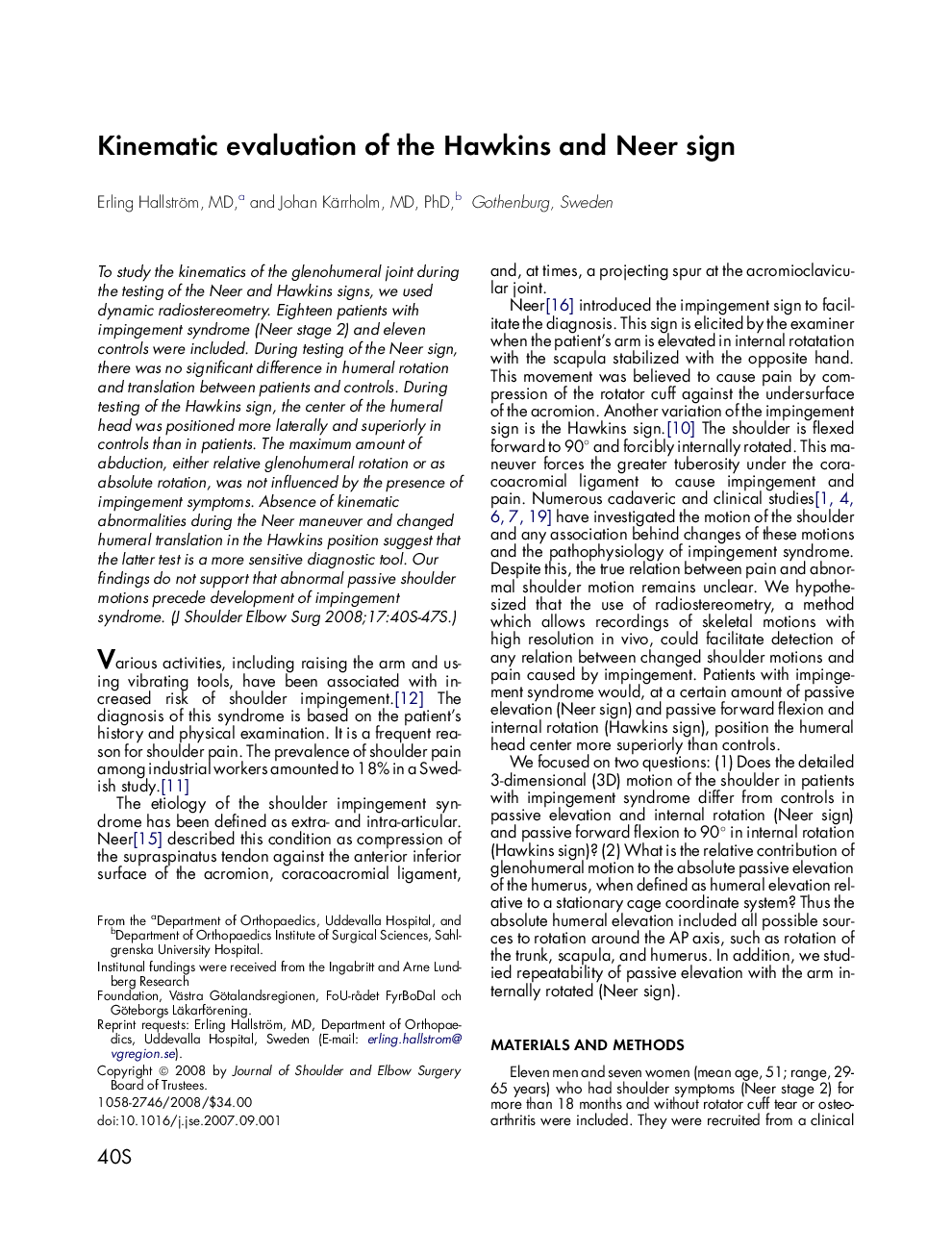| کد مقاله | کد نشریه | سال انتشار | مقاله انگلیسی | نسخه تمام متن |
|---|---|---|---|---|
| 4075585 | 1267043 | 2008 | 8 صفحه PDF | دانلود رایگان |

To study the kinematics of the glenohumeral joint during the testing of the Neer and Hawkins signs, we used dynamic radiostereometry. Eighteen patients with impingement syndrome (Neer stage 2) and eleven controls were included. During testing of the Neer sign, there was no significant difference in humeral rotation and translation between patients and controls. During testing of the Hawkins sign, the center of the humeral head was positioned more laterally and superiorly in controls than in patients. The maximum amount of abduction, either relative glenohumeral rotation or as absolute rotation, was not influenced by the presence of impingement symptoms. Absence of kinematic abnormalities during the Neer maneuver and changed humeral translation in the Hawkins position suggest that the latter test is a more sensitive diagnostic tool. Our findings do not support that abnormal passive shoulder motions precede development of impingement syndrome.
Journal: Journal of Shoulder and Elbow Surgery - Volume 17, Issue 1, Supplement, January–February 2008, Pages S40–S47